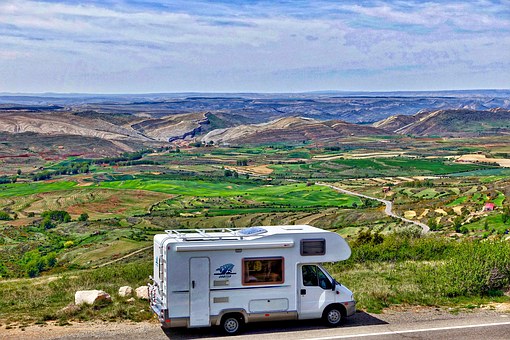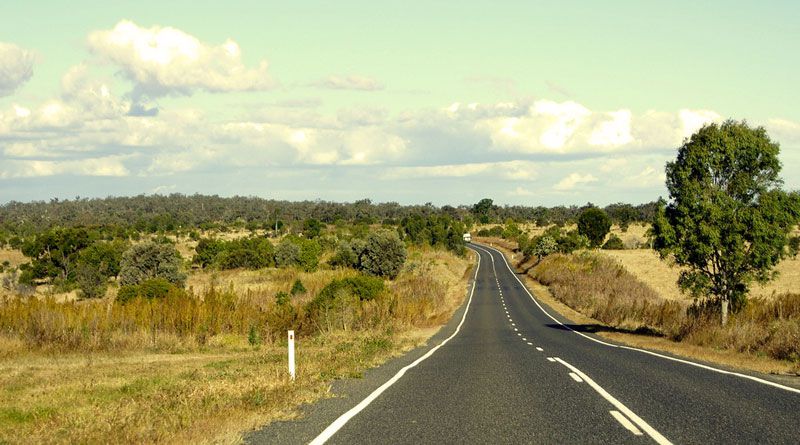Although when you hit the road, the main reason you travel is to get out of town and away from the everyday grind, relax and enjoy the calmness of the outback and settle yourself in some low-lying idyllic setting surrounded by trees and relax. You sometimes find when you hit that spot that is as ‘picturesque’ as the brochure said, you suddenly see a problem, there’s no picture on the TV and no connectivity on your devices.
Keeping connected while on the road now is becoming more important to travellers whether in a motorhome, caravan or any other mode of transport.
The good old days of just heading out and cutting yourself off the outside world for many are a thing of the past, keeping connected is pretty much a necessity for today’s travellers. And that’s not just to watch your favourite TV programmes or the big game but connectivity in general.
How to get Internet Connectivity While out and About in Australia
In the olden day’s connectivity, internet or broadband was never a consideration on a caravanning holiday but now it is paramount and leaving home without a reliable kit can turn a jolly vacation into a frustrating one.
Here we look to give you some basics on what to do to ensure you are connected and not just for entertainment purposes, as we all know Australia is a vast country with some harsh terrain, so ensuring you are contactable at all time is essential.
At home, you have a connection that is hard-wired into a grid but you’ll be mainly relying upon WiFi when travelling to keep you in the loop when you’re on the road.
Most of today’s modern laptops and mobiles have the latest antenna to at least get you some connection.
Connectivity Factors to Consider
When you are on the road, you must take into consideration a few variables that determine what kind of signal strength you will receive, subsequently affecting your download speeds and signal strength.
User Numbers:
The more people using the connection at the same time will affect each user’s bandwidth, simple maths if you are using a hotspot with four users each of you is running at 25% capability, though at certain parks they have systems in place with a constant bandwidth to keep speeds consistent.
Obstacles
Many caravan Parks advertise picturesque setting many of these nearby ravines, and low-lying areas surrounded by trees, of course, the perfect place to park up and enjoy the relaxation, but trees are a dampener for signals leading to reduced signal strength. If possible stay as close to the hotspot location as possible.
Other Appliance Factors
Appliances within your vehicle can also have an effect such as radios and even microwaves operate on frequencies the same as hotspots, so try and keep your devices out of the way to avoid interference.
Internet Access Options While on the Move
Your user plan will dictate the variety of options at your disposal when you need to use WiFi.
Public WiFi spots,
Mobile data usage,
Satellite WiFi
Installing your own router

Here we look at some pros and cons of each option
Public WiFi Hotspots
Pros
It’s free to use – If you are in town or near a suburb more and more providers offer it
Cons
Offers you the slowest connection speeds
You must be in a local coverage area
Restricted access without giving your details
Unsecure
Free WiFiHotspots are good for travellers who are just looking for a quick update, like a news or weather report or even checking your inbox or Facebook. If this is about the extent of your usage on the road, then stick to the hotspots as often as you can.
Remember coverage areas are small, so unless you are prepared to stop a while, you’ll only have a small window of usage. For hotspots that require you to complete personal details, you can bank on it that that information will be passed/sold onto marketing companies so bear that in mind.
Plus there are usually data usage restrictions, so checking your email may be OK but don’t start thinking about downloading movies or streaming sports.
Mobile Data Usage and Hotspotting
Pros
You gain larger bandwidth
No restrictions apart from your own personal limit
More than one device can be used at the same time
Available where phone coverage is
Pre and post-paid options
Cons
Data limits can be used very quickly
Price points can be expensive
A mobile capable device is a must to hotspot
Remote areas tend to be an issue
Requires the latest smartphone or tablet technology antenna
Hotspotting is a solution for roadsters who need frequent access,but not on a continual basis that would require a router for example. You can tether to a hotspot and use the internet data available. Even with multiple users, you should still receive reasonable connections speeds. The best advice is to go to a premium plan with plenty of data before you start out, so you have adequate data allowance.
Make sure you can charge your device as it will drain your battery at breakneck speed.
Coverage for Hotspotting
Unfortunately, it’s heavily dependent on your carrier’s capabilities, and some are better than others.
The main players in the market are Optus and Telstra.
Telstra currently has the edge as far as coverage and Optus pretty close behind. Various providers work on their infrastructure.
Before you hit the road speak to your provider and look at what plan suits what part of the country you’ll be travelling to and discuss coverage and budget.
Satellite WiFi
Pros
You’ll have access wherever you are in the country
Speed is usually no issue
Much larger download limits
Cons
Price – Satellite systems do not come cheap, and also set-up can cost if you are not a handy technician yourself
Extremely tricky to find a competitive payment plan
Most likely will require roof mounting to the vehicle that you are travelling with
Satellite WiFi is used by a variety of major corporations especially those who work offshore and can be fitted to most RV’s. It will give you guaranteed internet access and some of the fastest speeds available, with multiple users not having to consider download and usage.
There are two systems – full or handheld.
Full is the dish version that will be required to be mounted to the RV.
Handheld is slightly cheaper, but you will be limited with the messaging services.
Expense wise, be prepared to be looking at a few thousand dollars. The data plans usually are not included with the system and can add up very quickly for download usage. These are more for people who will be conducting some work while travelling and in need of constant communication options, but are not using it for social surfing purposes so much.

Portable Wireless Routers
Pros
Multiple plan options
Variety of routers to choose from
Lots of payment plan options
Comes with pre-paid and post-paid options
Cons
Better coverage that free WiFi hotspots but can be unreliable at times and connection speeds can vary
May require a booster or external antenna to gain reliable coverage
Out of the options we have discussed pound-for-pound this is the traveller’s second best option if usage is frequent. It comes with a larger hotspot range and can handle multiple devices.
Though bear in mind you’ll still more than likely need a sim card and require a data plan to use them as they also operate off 3G and 4G networks.
It’s a case of considering where you will be travelling should dictate how you prepare your connectivity, if you are close to populated areas then the wireless router will be your best bet, if you plan to go off-the-beaten-track then a satellite system would obviously be your best best but your price point has to be a significant consideration.
Staying in caravan parks allows you to use free WiFi and hotspots so depending on whether they charge or not can make a decision to get a pre-paid plan to use their facility.
Conclusion
This has all been about connectivity whilst you are on your travels and the road, but hey sometimes when you are travelling around, try to relax and enjoy the scenery and put the mobile and the laptop down for a moment and take in some of the beautiful scenery and wilderness that the country has to offer and enjoy the memories. Facebook and YouTube will still be there when you get home I GUARANTEE IT!

Jimmy has been a blogger for the last 11 years after retirement. He worked in the electronic manufacturing field for nearly 30 years and keeps a close eye on the market. He is associated with Winsig who specialise in Winegard TV Antenna.

